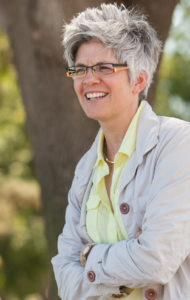
Integrating Facility with Technology into Course Assignments
I have often assumed that students have more facility with technology than I do. Unfortunately, this assumption has been wrong and student learning has paid the price. So now, when there is likely to be a steep learning curve for some students relative to equipment (like recording on the iPhone) or a platform (like Vimeo) or learning management system (like Moodle), I integrate facility with technology into course assignments.
For example, in a semester-long, face-to-face preaching course, students must record and post their third sermons into Moodle after preaching them in a local congregation. Unfortunately, I realized that even with weeks (if not months) of notice that such a requirement is upon them, many students would spend more time worrying about equipment failure than the sermon itself. Then after preaching they would spend hours trying to upload their sermon onto a video sharing platform only to run into trouble posting on the university’s learning management system. Even more, my teaching assistants’ available hours were being used up troubleshooting for anxious students and tech-savvy students were reaching the end of their willingness to assist classmates (and ashamed to admit some resentment).
Clearly an interruption in the cycle was needed and the onus was on me to be the interrupter. What follows is an iteration of my new m.o. I continue the practice of letting students know early in the semester (essentially, the first day) that they will be responsible for recording and posting sermons. But now, my very next sentence is, “And, know that by the time you get to sermon three you will have had numerous opportunities to increase your facility with the technology that is needed to fulfill that part of the assignment.” At that point, I turn the class over to a teaching assistant who introduces herself, articulates the extent to which she will be available to provide tech assistance, notes the portion of the syllabus that clearly outlines the technological requirements for the course, and distributes a “how to record and post videos of sermons” handout.
Perhaps the most helpful change I made was to adapt an assignment in week three. I replaced the typical online text-based discussion forum with a visual post. In other words, instead of typing their response to the weeks’ reading, they posted a two-minute video. While this low-stakes assignment had a desired deadline, students were not penalized if they were late if they were having tech troubles. The TA was available to meet with students in pairs or groups of three to assist with their recordings and postings. Lo and behold, the discussion on the material was already beginning as students honed their recorded reflections. This assignment gave us a sense of how many (and who) might need additional tech assistance. We set up out-of-class tutoring sessions accordingly.
By this point, everyone had already succeeded, albeit with some assistance.. Additional unforeseen blessings were 1) the posts were much more animated and creative than usual, which yielded more engaging discussion threads; and 2) students had begun to overcome the squeamishness of seeing themselves on video and hearing their recorded voices.
A second major change is one I wish I would have discovered a decade ago. For the first two sermons in the class, I would operate the camera and a teaching assistant would post the videos. Of course, I got into this habit because I started teaching preaching before everyone carried around their own device (yes, there was such a time!). Now that nearly (!) everyone has such equipment readily available, it would be a wasted learning opportunity for students (and a waste of my energy and time) not to utilize it. Therefore, every student takes responsibility for being the camera operator for one peer. Not only is this valuable for the camera operator, but an additional benefit is that the preacher practices communicating his/her needs (e.g., location of camera, desired angle), which is good preparation for enlisting a helper in the congregation. While the stakes are getting higher, we set up a backup camera just in case a preacher forgets to charge his battery or a fellow classmate forgets to push “record.” Once again students have to transfer the digital recording to a platform that can be easily accessed on Moodle. At this point, we review and emphasize the handout’s recommended privacy settings.
After repeating this process for one additional in-class sermon, students are well prepared to plan for recording sermon three. They are enjoying a sense of accomplishment and getting credit for it! Even more, they can now focus on preparing faithful and impactful sermons for the congregational setting, instead of anxiously anticipating their technical demands.
Leave a Reply